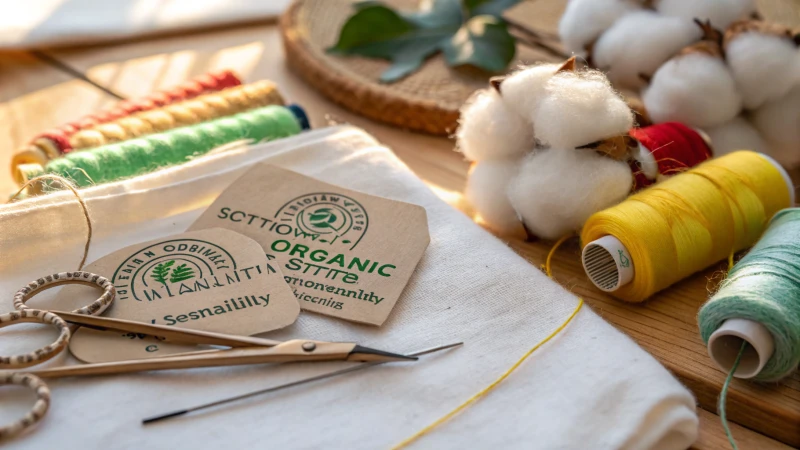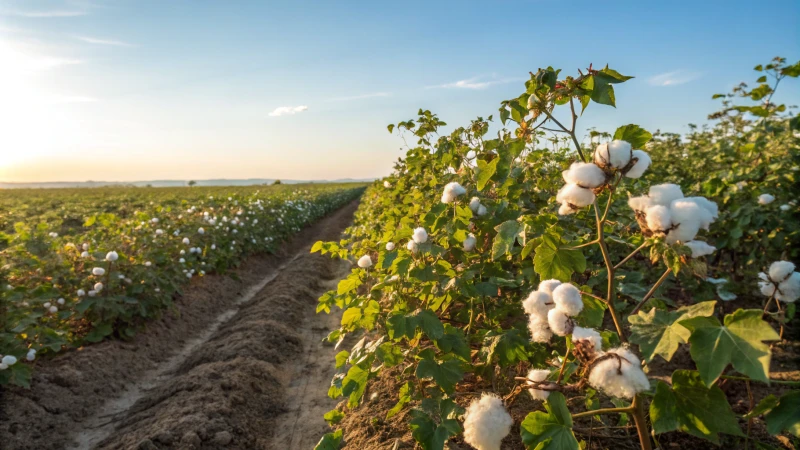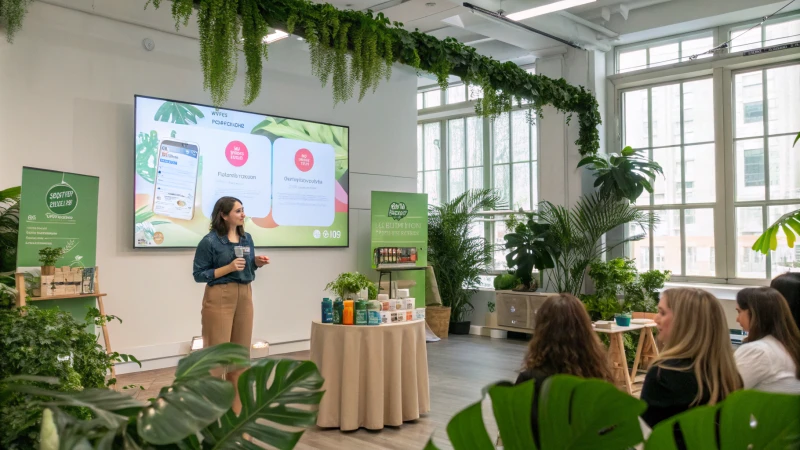
Do you ever think about what happens behind the scenes when brands look for organic cotton for their underwear? It is really not as simple as it looks!
Brands encounter big challenges when sourcing organic cotton for underwear. Costs are high. Supply is limited. Certification processes are complex. Navigating these obstacles is important. Brands want sustainability. They also want to stay competitive in the market. Sustainability and competitiveness are key.
In my journey through the fashion world, I found that getting organic cotton is a very confusing process with many surprises. Costs are often extremely high. A friend once talked about trying to start a sustainable brand. The numbers about high expenses and minimum orders really shocked me. The supply is also very limited. Organic cotton is like a rare treasure, often influenced by unpredictable weather. This situation is heartbreaking for both brands and workers in these fragile areas. This challenging path shows our strong promise to sustainability and ethical behavior. Sustainability is very important to us.
Sourcing organic cotton for underwear is cost-effective.False
This claim is false; sourcing organic cotton often incurs higher costs than conventional materials due to limited supply and certification expenses.
Brands face complex certification processes for organic cotton.True
This claim is true; the certification process for organic cotton can be intricate, posing challenges for brands aiming to source sustainably.
What Are the Financial Implications of Sourcing Organic Cotton?
I explore the world of organic cotton. I think about its costs. It is more than numbers. These choices connect with my values. I focus on sustainable fashion.
Organic cotton sourcing involves major financial challenges. Growing this cotton requires a lot of work, which raises production costs. Farmers need to produce large minimum orders, often at least 14,000 pieces. Supply limits create price changes, which is a problem. Certification processes are also complicated. Brands deal with these issues carefully. They try to balance sustainability with making money. This balance is really important.

Understanding the Cost of Organic Cotton
When I began looking into buying organic cotton, I saw it is more complicated than regular cotton. Producing and processing organic cotton often costs a lot more. I recall my first conversation with a supplier, who explained how farming these crops needs a lot of labor. I realized each piece of organic cotton tells a story of farmers' hard work and dedication—farmers who care deeply for the planet.
A big obstacle I faced was the minimum order quantity (MOQ). It can go up to 14,000 pieces or even more! For small brands like mine, this seemed overwhelming. I found myself questioning if I could really afford such a large upfront investment. The fear of having too much stock felt very real. Many new entrepreneurs feel this challenge, trying to balance dreams with realities. It truly is a struggle.
Supply Challenges and Changing Prices
As I learned more, I discovered that organic cotton is not just about cost; it's also about the supply. Organic cotton grows mostly in certain places with good climates. This can lead to price volatility, as yields are often unstable due to environmental factors such as droughts or floods. Suddenly, my plans for a steady supply chain seemed very unstable—it felt like a house of cards ready to fall.
| Factor | Impact on Costs |
|---|---|
| Production Costs | Higher due to labor-intensive methods |
| MOQ Requirements | Higher upfront investment |
| Supply Limitations | Increases procurement uncertainty |
| Price Volatility | Difficulty in financial forecasting |
Certification and Traceability Issues
Going through the certification for organic cotton opened my eyes. It was not simply getting approval; it was about following complex organic standards at every step. This added unexpected complexity and expense. I realized I needed new management strategies to keep everything clear. Traceability also needed to stay constant through the whole supply chain.
I also needed to teach my potential customers about these hurdles. Consumers increasingly like sustainable options, but many do not know the costs or understand the complications in sourcing organic materials. I wanted to connect with them and share what I learned.
Ethics vs. Financial Survival
There’s also the ethical side: as a brand aiming to stay truthful, supporting fair trade in organic cotton raises costs even more. Balancing these aspects was tricky; I had to weigh my ethical promises against financial survival while considering market positioning.
Important Points:
- Ethical Sourcing: Influences costs but improves brand image.
- Consumer Demand: Rising interest might increase prices if demand gets too high.
- Market Competition: Brands must compete while managing higher costs from organic cotton.
Conclusion: A Complicated World
Throughout my journey into the financial aspects of using organic cotton, I learned a lot about the details involved—it's more than profit margins; it's about making smart decisions that fit my beliefs. Anyone aiming to understand this should look into financial strategies for sustainable sourcing1 and market trends in organic textiles. These can offer valuable knowledge, helping us as brand creators build a future where fashion and sustainability go hand in hand.
Sourcing organic cotton incurs higher production costs.True
Organic cotton production is labor-intensive and eco-friendly, leading to increased costs compared to conventional cotton.
Minimum order quantities for organic cotton are lower than conventional cotton.False
Organic cotton typically requires a minimum order of 14,000 pieces, making it a larger upfront investment for brands.
How Does Climate Change Affect Organic Cotton Supply?
I explore the world of sustainable fashion. It is important to see how climate change is changing the organic cotton industry. Let's discover this issue together!
Climate change very much affects organic cotton supply. It changes weather patterns. It reduces the amount of crops produced. It raises production costs a lot. This creates difficulties for sustainable sourcing in fashion. The industry needs awareness and adaptation. This is very important.

Climate Change and Crop Yields
In my journey to understand sustainable sourcing, I have learned how much climate change affects organic cotton supply. This is not just a number for me. It affects farmers, brands, and consumers like us.
I remember visiting a farm in India. Passionate farmers talked about their challenges with organic cotton yields. Rising temperatures and unpredictable weather stress their crops. A small rise of 1°C could reduce yields by up to 10% in some areas. This puts huge pressure on farmers who already work hard to grow cotton sustainably.
Pest threats also loom large. In organic farming, pest control choices are few, making crops very vulnerable. It's sad to see climate change impact the land and the lives connected to it.
Water Availability
Water scarcity is a big issue for me. Organic cotton needs a lot of water, but changing rain patterns cause droughts or floods. Farmers hope for rain but face unpredictable monsoons in places like India. It affects not just water but the health of families and communities.
| Region | Impact of Climate Change | Possible Solutions |
|---|---|---|
| India | Erratic monsoons | Rainwater harvesting |
| USA | Increased drought conditions | Efficient irrigation systems |
| Africa | Soil degradation and erosion | Agroforestry practices |
Supply Chain Disruptions
Supply chain disruptions due to climate change also concern me. Natural disasters like hurricanes delay shipments, impacting whole communities, stopping production, and raising prices. The logistical challenges stemming from these disruptions can lead to increased costs for brands relying on organic cotton.
I often wonder how brands manage when their supply chain is at risk. For effective strategies on managing supply chain risks, explore supply chain management in agriculture2.
Economic Implications
Economic effects are very significant. Price changes from limited supply push retail costs higher. Organic cotton, costlier than regular cotton, becomes more expensive as climate change exacerbates these problems.
We need to know these factors as consumers and support sustainable choices while brands may need to educate consumers about these economic factors while emphasizing the importance of sustainability.
To understand the economic trends better, check out economic impact studies on organic farming3.
Conclusion Not Required
In exploring these areas, I see many challenges in sustainable organic cotton. Yet discussions about adapting farming methods give me hope that farmers, brands, and consumers must work together to face these changes and create a better future for organic cotton.
Climate change reduces organic cotton yields significantly.True
Studies indicate that a 1°C rise can decrease organic cotton yields by up to 10%, affecting supply stability.
Water scarcity does not affect organic cotton production.False
Organic cotton requires ample water; changing rainfall patterns lead to water scarcity, impacting crop growth.
What Are the Certification Processes Involved in Sourcing Organic Cotton?
I started exploring the world of organic cotton. I found a complex and interesting network of certification methods. These aim to support sustainability. They also promote ethical practices. Let me share what I have learned.
The main certifications for organic cotton are GOTS, OCS and USDA Organic. Each one focuses on different parts of environmental and ethical rules during production. Knowing these helps you choose responsibly for your brand or personal shopping.

Understanding Organic Cotton Certifications
The process to ensure our cotton feels soft and breathable is fascinating. Farmers grow it in a way that helps our planet. Certification checks organic cotton sources. These checks act like special badges. They prove that farmers follow environmental and ethical rules.
Organic cotton sourcing involves several critical certification processes that ensure compliance with specific environmental and ethical standards. The most recognized certifications include:
| Certification Standard | Description |
|---|---|
| GOTS (Global Organic Textile Standard) | The leading textile processing standard for organic fibers, covering ecological and social criteria. |
| OCS (Organic Content Standard) | Focuses on tracking organic raw materials through the supply chain, ensuring authenticity and transparency. |
| USDA Organic | A certification by the United States Department of Agriculture that ensures cotton is grown without synthetic fertilizers or pesticides. |
Each of these certifications has unique requirements and implications for sourcing organic cotton.
GOTS Certification
The GOTS certification is a comprehensive standard that not only covers the organic status of the cotton itself but also ensures that the entire manufacturing process adheres to strict environmental and social criteria.
Key Criteria for GOTS Certification:
- Organic Fiber Content: At least 70% organic fiber is required.
- Chemical Restrictions: Prohibits harmful chemicals in processing and dyes.
- Fair Labor Practices: Ensures fair wages and safe working conditions for workers.
This certification is particularly valued by brands seeking to demonstrate their commitment to sustainability and ethical practices. Learn more about GOTS4.
OCS Certification
The Organic Content Standard (OCS) is more focused on traceability and verifying the content of organic material in products. Unlike GOTS, it does not cover the entire production process but focuses on the supply chain.
Benefits of OCS Certification:
- Transparency: Provides assurance that organic materials are tracked through the supply chain.
- Flexibility: Brands can apply OCS to various products, not just textiles.
For companies looking to enhance their credibility in organic sourcing, obtaining OCS certification can be beneficial. Discover more about OCS5.
USDA Organic Certification
In the United States, the USDA Organic certification is essential for producers who want to market their products as organic. This certification focuses primarily on agricultural practices.
Requirements for USDA Organic Certification:
- No Synthetic Additives: Cotton must be grown without synthetic pesticides or fertilizers.
- Soil Health: Farmers must maintain soil health through natural practices.
- Annual Inspections: Farms are subject to annual inspections to ensure compliance.
USDA Organic certification is crucial for brands targeting the North American market who wish to capitalize on the growing consumer demand for organic products. Find out about USDA Organic6.
Challenges in Certification Processes
While these certifications are vital for organic cotton sourcing, they come with their own set of challenges:
- High Costs: The certification process can be expensive due to fees and compliance costs.
- Complexity: Navigating through different certifications can be overwhelming for smaller brands.
- Traceability Issues: Ensuring complete traceability from farm to final product can be challenging due to multiple intermediaries in the supply chain.
Brands must weigh these factors against the benefits of certification, including improved brand image and consumer trust. Explore the challenges7.
GOTS certification requires at least 70% organic fiber content.True
The GOTS standard mandates that products contain a minimum of 70% organic fibers to qualify for certification, ensuring genuine organic sourcing.
USDA Organic certification allows synthetic fertilizers in cotton farming.False
USDA Organic certification strictly prohibits the use of synthetic fertilizers and pesticides in cotton cultivation, promoting natural farming practices.
How Can Brands Educate Consumers About Sustainable Practices?
I really care about our planet. Brands play a very important role in guiding people toward sustainable habits. Brands need to communicate clearly. Brands should create genuine connections. This probably inspires eco-friendly habits in our daily lives.
Brands educate consumers about sustainable practices through clear messages. They tell stories and share information about their supply chains. Social media and influencer partnerships help increase awareness. These collaborations encourage people to join in sustainability efforts. Brands really want consumers to know about their sustainable practices.

When I think about how my shopping habits affect the world, I remember my own steps toward living sustainably. My journey began when I accidentally found a documentary about the fashion industry's harm to nature. I was very surprised by how our clothes hurt the earth. This feeling made me want to make better choices. Brands have the power to teach people about green practices.
Understanding Consumer Awareness
Brands can play a significant role in educating consumers about sustainable practices. To effectively communicate sustainability initiatives, brands should first ensure that their messaging is clear and relatable. This means using straightforward language to explain complex concepts such as organic materials, ethical sourcing, and carbon footprints.
For instance, visual storytelling through infographics8 can simplify these concepts and make them more digestible for consumers. Consider creating a table that outlines the benefits of sustainable materials versus conventional options:
| Material Type | Sustainability Benefits | Cost Implications |
|---|---|---|
| Organic Cotton | Reduces chemical use, supports biodiversity | Higher production costs |
| Conventional Cotton | Cheaper to produce but harmful to the environment | Lower initial price point |
Engaging Through Transparency
Transparency is key in building trust. Brands should share detailed information about their supply chain, including sourcing practices and the production processes behind their products. Tools like supply chain maps9 can visually represent where materials come from and the steps involved in production.
Additionally, hosting Q&A sessions or webinars can foster direct communication with consumers. This two-way engagement allows brands to clarify doubts and address concerns regarding sustainability efforts.
Leveraging Social Media Platforms
Social media platforms are powerful tools for education. Brands can utilize platforms like Instagram and TikTok to create engaging content that highlights their sustainable practices. Short videos or stories showcasing behind-the-scenes processes or the impact of consumer choices can resonate well with audiences.
Here’s a simple content calendar for social media posts focused on sustainability:
| Day | Content Type | Theme |
|---|---|---|
| Monday | Infographic | Sustainable Materials |
| Wednesday | Video (Behind-the-Scenes) | Eco-Friendly Production |
| Friday | Customer Testimonial | Positive Impact Stories |
Collaborating with Influencers
Partnering with influencers who prioritize sustainability can amplify a brand's message. By collaborating with eco-conscious influencers, brands can reach wider audiences who are already interested in sustainable practices. Influencers can create authentic content that showcases the brand's commitment to sustainability, helping to educate their followers.
Brands should also consider sharing case studies10 that highlight successful collaborations and the positive outcomes achieved through these partnerships.
Encouraging Consumer Participation
Finally, brands should encourage consumer participation in sustainability initiatives. This could include programs where customers can return products for recycling or incentives for purchasing sustainable products. Engaging customers in this way not only educates them but also fosters a sense of community around sustainability efforts.
Brands can simplify sustainability concepts using infographics.True
Infographics help consumers understand complex sustainability topics by presenting information visually, making it easier to digest and retain.
Social media is ineffective for educating consumers about sustainability.False
Contrary to this claim, social media platforms are powerful tools for brands to engage and educate consumers on sustainable practices effectively.
Conclusion
Sourcing organic cotton for underwear presents brands with high costs, limited availability, complex certifications, and climate-related challenges that complicate sustainable practices.
Explore detailed insights into the costs associated with sourcing organic cotton and understand how they affect business decisions. ↩
Discover how water availability is influenced by climate changes in cotton farming. ↩
Learn about the economic implications of climate fluctuations on the organic cotton market. ↩
Gain insights into the intricacies of organic cotton certifications to enhance your sourcing strategies. ↩
Understand the traceability benefits of OCS certification for your brand's supply chain. ↩
Learn about USDA Organic certification standards and their impact on sourcing decisions. ↩
Discover common challenges faced during organic cotton certification processes to prepare your brand effectively. ↩
Discover effective strategies brands use to educate consumers on sustainability, fostering awareness and responsible consumption. ↩
Learn how transparency in supply chains can enhance consumer trust and knowledge about sustainable practices. ↩
Explore successful influencer partnerships that have promoted sustainability effectively among consumers. ↩






